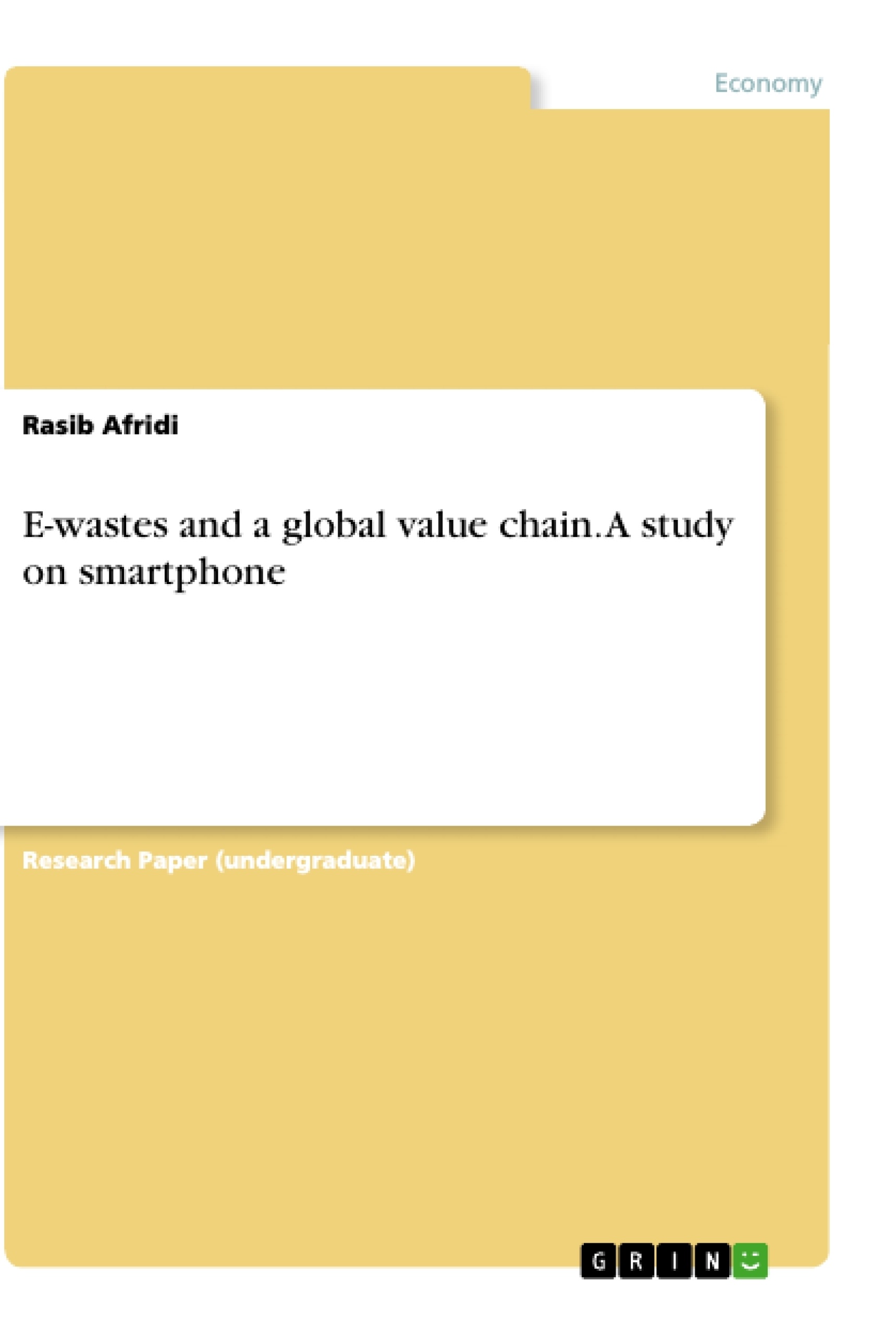This paper presents a study on Smartphone generated E-wastes with the primary vision of turning this lethal pollutant into a competitive advantage. It shows a developed A2Z strategic model that will streamline a holistic value proposition for the complete management of Smartphone generated E-wastes. The A2Z strategic model is a three-step guideline across the three core value chain of E-wastes: Assembly, Branding and Zero-Economy. The essence of this strategy is to target parts of the value chain separately and design solutions keeping a sustainable competitive advantage in priority all the time. This model integrates all previous suggested strategies into one whole model and can be replicated to all other electronics industry in Bangladesh.
Electronic waste (e-waste) are discarded electrical devices like Smartphones, Laptops, Monitors and other forms of consumer electronics. The government of Bangladesh is trying to impose strict measures to stop the meteoric rise of e-waste, which is projected to amount to 46.2 Lac tons by 2035, mobile handsets being one of the notable contributors. A staggering 135 million units of mobile devices were left unrecycled in 2010 alone.
The industry analysis showed a movement towards the controlling of the present situation of E-waste through stringent policies and Government compliance. Technological breakthrough from innovating brands have fast-forwarded the route of the E-waste management strategy. The role of government is significant, and through the porter's diamond model, it is portrayed both as a catalyst and as a challenger. Although governments cannot create competitive industries, it can play an important role in encouraging and push companies to reach higher levels.
Inhaltsverzeichnis (Table of Contents)
- Introduction
- Objectives
- Broad Objectives
- Specific Objectives
- Literature Review
- E-Waste in Bangladesh
- Current Situation of E-Waste in foreign countries
- E-Waste Treatment Technology
- Relationship of Sustainability in Smartphone Buying Pattern
- Viability and Adaptive analysis of E-Waste Treatment Facilities
- Strategic Analysis of Local Smartphone Brands
- Methodology
- Data Source
- Access to Data
- E-waste Overview
- Industry Analysis: PESTEL
- Industry Analysis: Porters Diamond Model
- Global Value Chain
- Raw Materials
- Assembly
- Marketing and Branding
- Distribution, Sales and After Sales Services
- Recycling
- Strategic Plan
- Assembly
- Two-fold Branding
- Cash Based Incentive
- Consumer Awareness
- Local Brands innovating to create a superior Buyer Value
- The vision: Moving towards "Zero economy"
Zielsetzung und Themenschwerpunkte (Objectives and Key Themes)
This research paper focuses on the study of smartphone-generated e-waste in Bangladesh, aiming to transform this environmental hazard into a competitive advantage for local smartphone brands. The paper analyzes the current e-waste situation, investigates global best practices, and proposes a strategic framework for managing the growing e-waste problem.
- Turning e-waste into a competitive advantage for local smartphone brands.
- Analyzing the current situation of smartphone-generated e-waste and the global value chain.
- Developing a strategic framework to manage rising e-waste.
- Investigating the viability of adapting global best practices to the local context.
- Exploring the role of government policies and regulations in e-waste management.
Zusammenfassung der Kapitel (Chapter Summaries)
- Introduction: Introduces the issue of e-waste in Bangladesh, emphasizing the rapid growth of smartphone-generated waste and its potential environmental risks. It highlights the need for local smartphone brands to develop a competitive advantage by addressing e-waste management.
- Objectives: Outlines the research objectives, focusing on analyzing the current e-waste situation, developing a strategic framework for its management, and exploring the potential for local smartphone brands to adopt global best practices.
- Literature Review: Reviews existing literature on e-waste in Bangladesh, including its current situation, global trends, e-waste treatment technologies, and the relationship between sustainability and consumer buying patterns. It also explores the viability and adaptive analysis of e-waste treatment facilities and provides a strategic analysis of local smartphone brands.
- Methodology: Details the data sources and research methods employed in the study.
- E-waste Overview: Provides an overview of the e-waste problem in Bangladesh, including statistics and the current state of e-waste management.
- Industry Analysis: PESTEL: Analyzes the political, economic, social, technological, environmental, and legal factors influencing the e-waste industry in Bangladesh.
- Industry Analysis: Porter's Diamond Model: Applies Porter's Diamond Model to understand the competitive advantage of the e-waste industry in Bangladesh, focusing on the role of government, factor conditions, demand conditions, related and supporting industries, and firm strategy, structure, and rivalry.
- Global Value Chain: Examines the different stages of the global value chain for smartphones, including raw materials, assembly, marketing and branding, distribution, sales and after-sales services, and recycling.
- Strategic Plan: Presents a strategic plan for managing smartphone-generated e-waste in Bangladesh, focusing on three core value chains: assembly, branding, and zero-economy. It outlines specific strategies for each stage and emphasizes the need for a sustainable competitive advantage.
Schlüsselwörter (Keywords)
The research focuses on the study of e-waste in Bangladesh, specifically addressing the growing problem of smartphone-generated waste. The paper examines the current situation of e-waste management, explores global best practices, and proposes a strategic framework for turning this environmental hazard into a competitive advantage for local smartphone brands. Key concepts include e-waste management, sustainable development, competitive advantage, global value chain, triple triangle framework, Porter's diamond model, strategic planning, and zero-economy.
- Citation du texte
- Rasib Afridi (Auteur), 2019, E-wastes and a global value chain. A study on smartphone, Munich, GRIN Verlag, https://www.grin.com/document/504145



